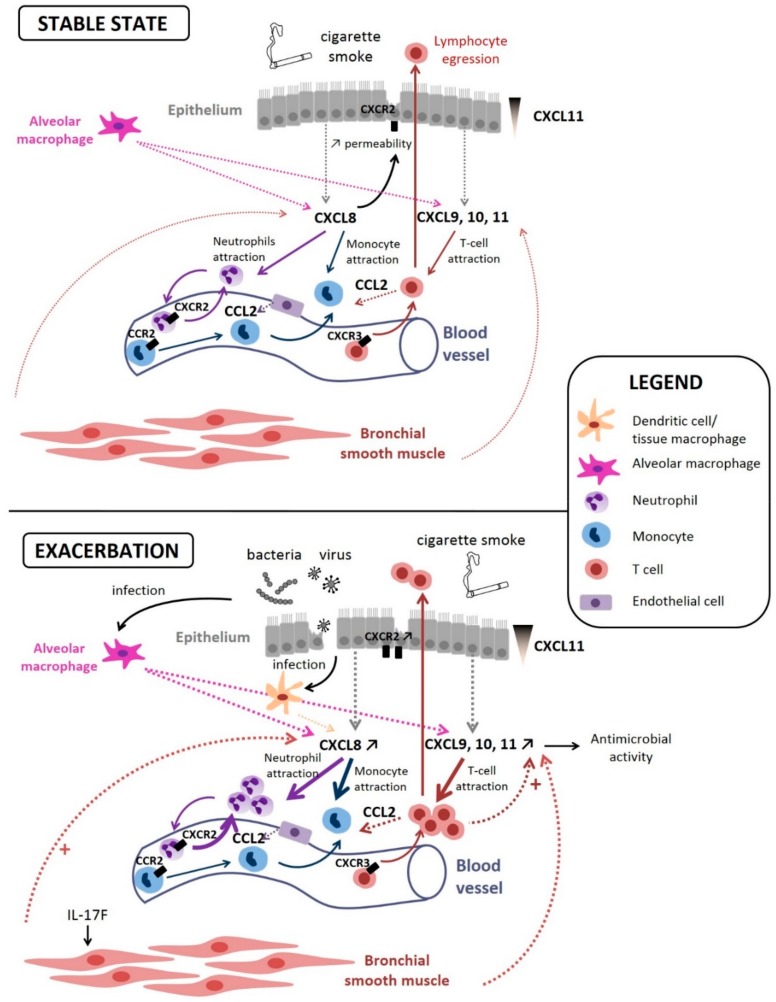Figure 2.
CXCL8-CXCR1/2, CXCL9/10/11-CXCR3, and CCL2-CCR2 axis implications at stable state and during an exacerbation in a COPD lung. At the stable state, CXCL8 (produced by alveolar macrophages, epithelial cells, and bronchial smooth muscle cells) binds on CXCR2 to attract circulating neutrophils and monocytes into the bronchial tissue as well as to increase epithelial cells permeability. CXCL9, 10, and 11 (produced by alveolar macrophages, epithelial cells, and bronchial smooth muscle cells) bind on CXCR3 to attract circulating T cells. A CXCL11 intra-epithelial gradient is responsible for lymphocyte egression towards the lumen. CCL2 (produced by T cells and endothelial cells) binds on CCR2 to attract monocytes. During an exacerbation, production of CXCL8 as well as CXCL9, 10 and 11 is enhanced, which increases the recruitment of monocytes and T cells into the bronchial tissue, participating to the immune (often triggered by microbial infection) response. Chemokines production by bronchial smooth muscle cells can be further enhanced upon IL-17F stimulation. The plain arrows (without other indications) show cell movements; the dotted arrows indicate chemokine secretion.

